The Ikibana restaurant offers a fusion of Japanese and Brazilian gastronomies, two cultures that seem so antagonistic: quiet and minimalist the first, exuberant and bustling the second.
One of the biggest conceptual challenges during the design of the restaurant was finding shared singularities between these two cultures. Being a great challenge, it also became the leitmotif of the project, as we discovered that the landscape was an extremely important element in both cultures, and we decided to extol this element in the design of the space and create an artificial landscape.
On the one hand Brazil represents an extraordinary lush landscape, while Brazilian life style absorbs and reflects this voluptuousness, always cheerful and full of color. On the other, traditional Japanese paintings, as well as the visual and dramatic arts, are full of references to their landscape. The art of flower arrangement known as Ikebana is one of the examples of this respect for nature deeply rooted in Japanese culture, and gives its name to the restaurant and inspiration to its design.
The result is a sinuous landscape created by different program elements or islands. On the one hand, bars and kitchens are divided and distributed around the restaurant, creating intensity nodes spread throughout the space. On the other, guests are sitting in the interior of colorful bowls. These islands are embraced by a fluid space which meanders around the restaurant, producing infinite angles of vision and allowing the constant movement of the waiters presenting the food to liven the atmosphere.
These Ikebana artistic arrangements look for the right proportion, composition and equilibrium among three elements: wood, leaves and flowers. The results are light, elegant and static compositions that simulate movement, premises in which our design will be articulated.
The wooden element in our design comes with the spectacular ceiling designed as a forest of entwined branches, becoming one of the main protagonists of the space. The light crosses the ceiling projecting a warm tinkling of lights and shadows on every surface of the restaurant.
As a counterpoint to the wood, the vegetal or green element can be found inside the display windows, acting as a curtain that diffuses the light and the vision between the interior and the street.
In a lower proportion, but not less important, the necessary color element in the Ikebana arrangements comes with the tables. Their design brings an explosion of fresh and tropical colors: lemon yellow, lime green, passion red. Its organic shape reminds us of a petal and can be easily adapted for groups, producing a new color composition with each new table arrangement.
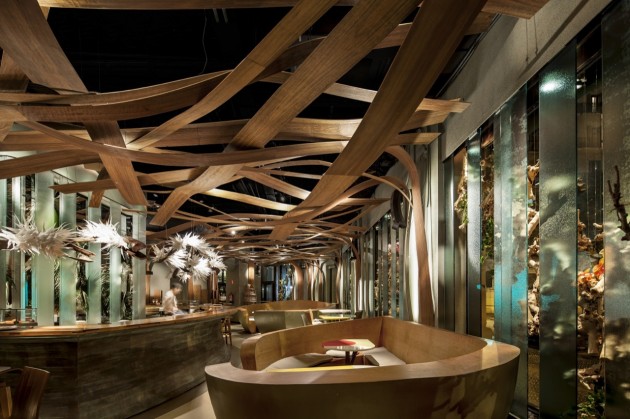
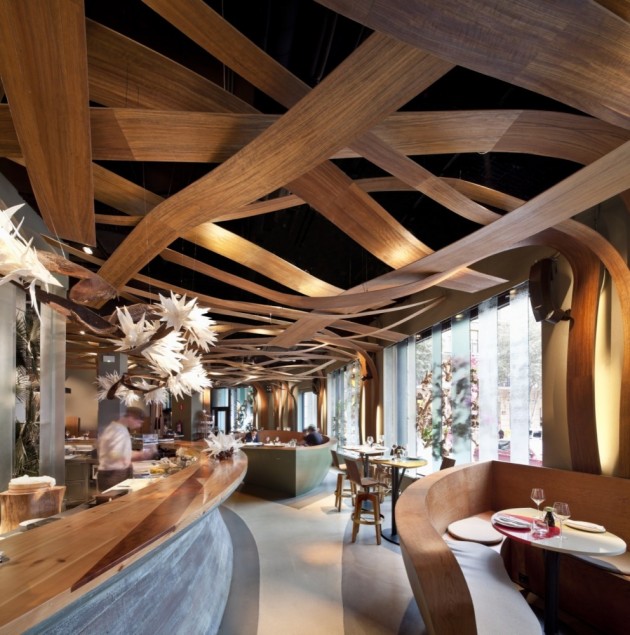
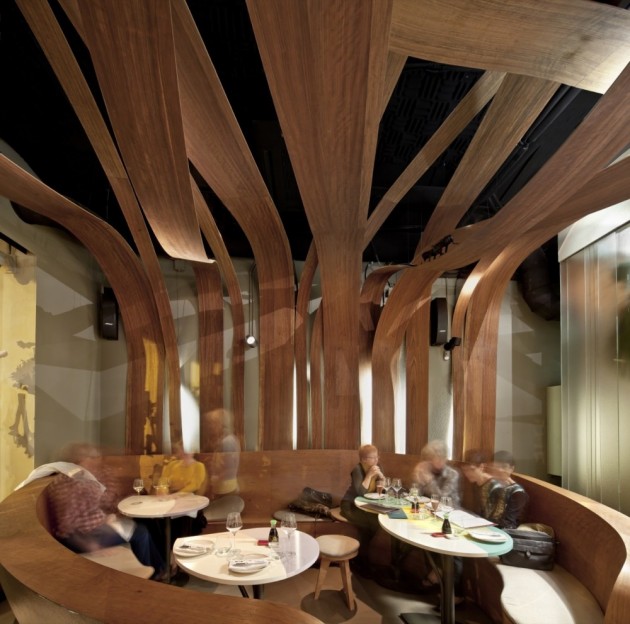
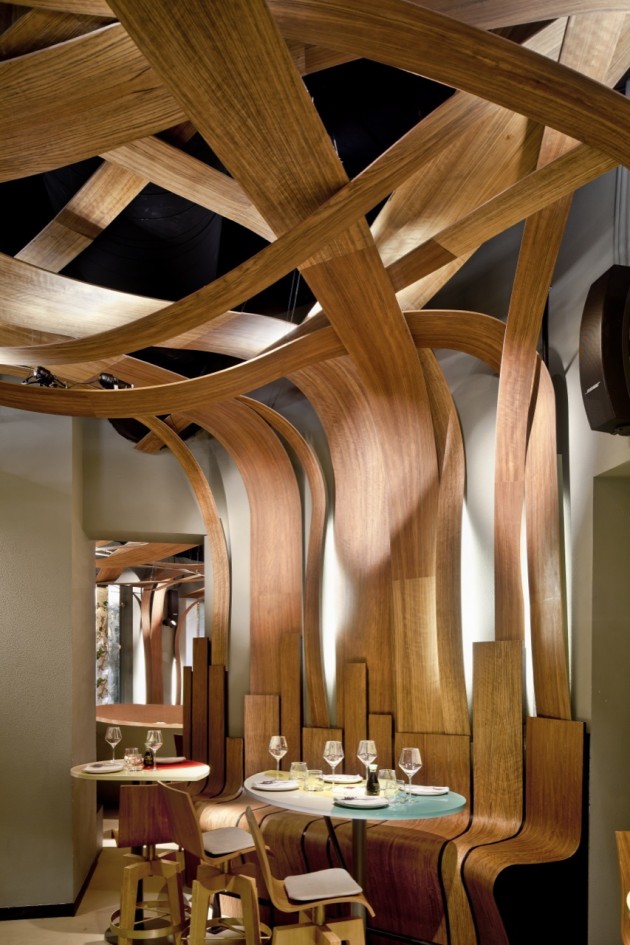
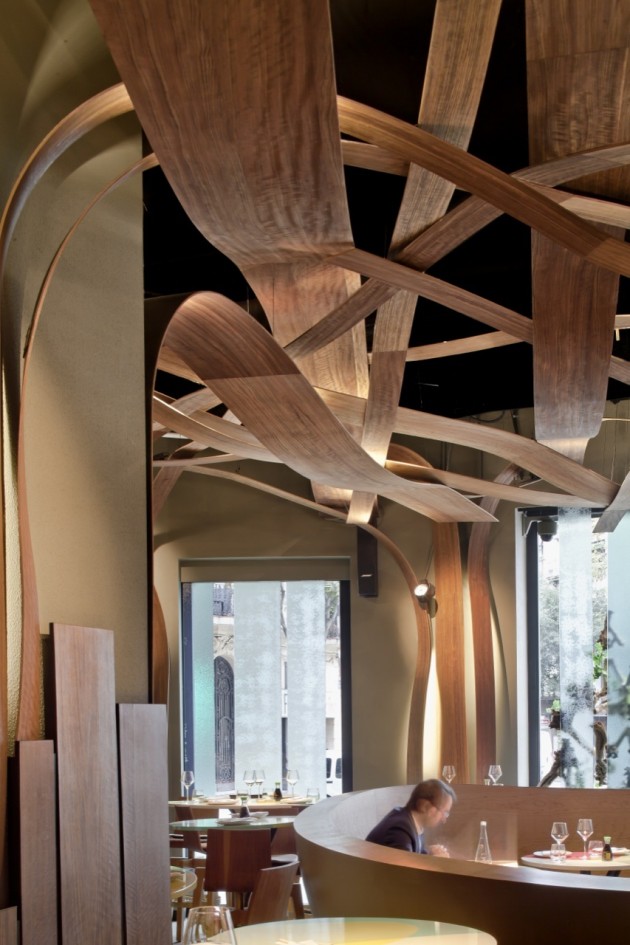
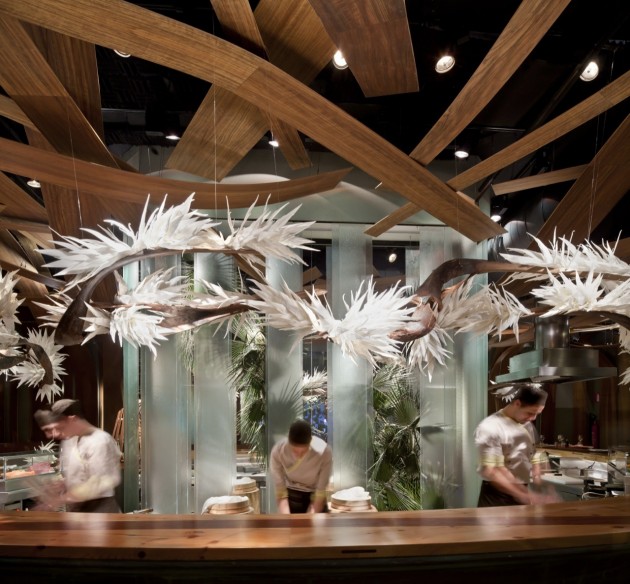
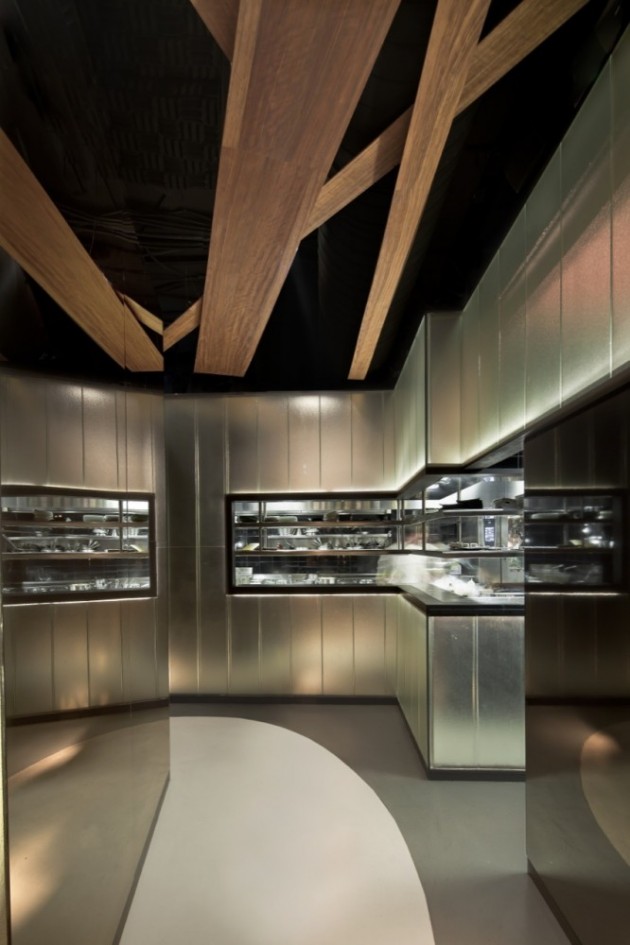
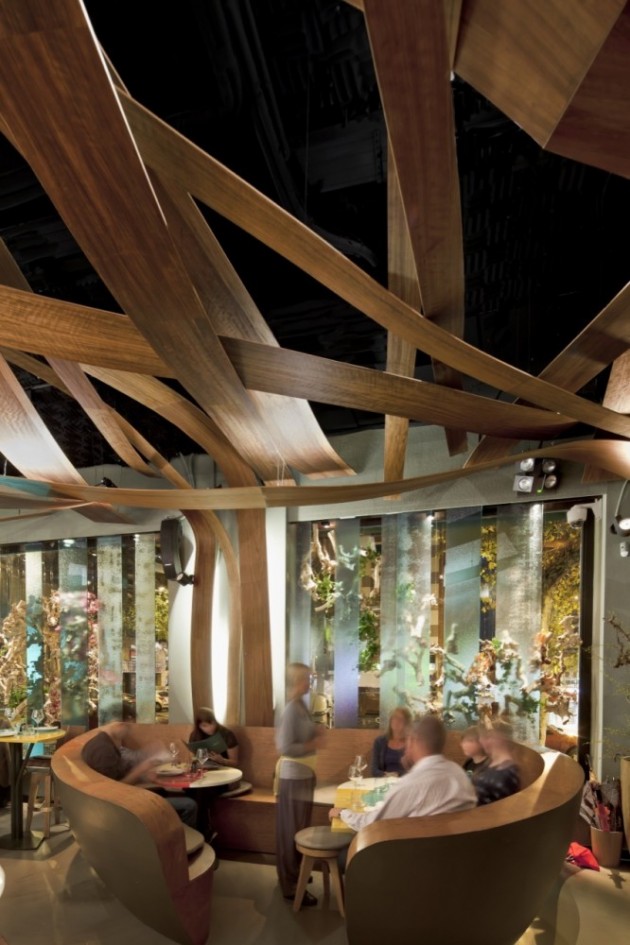
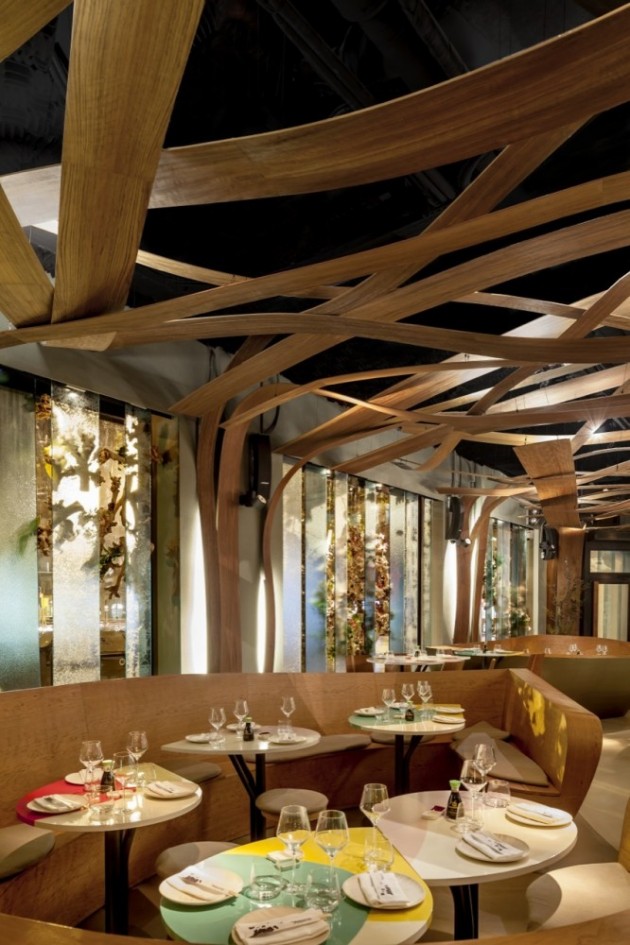
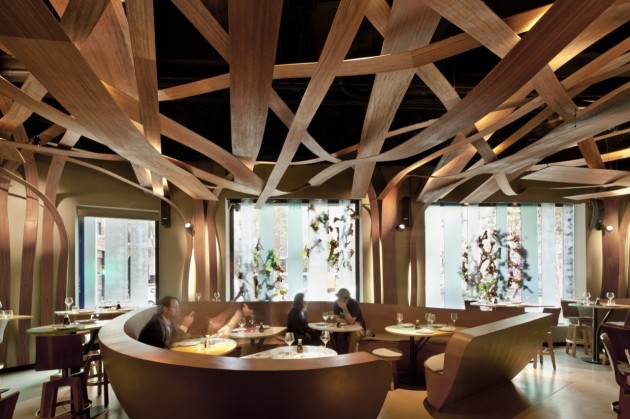
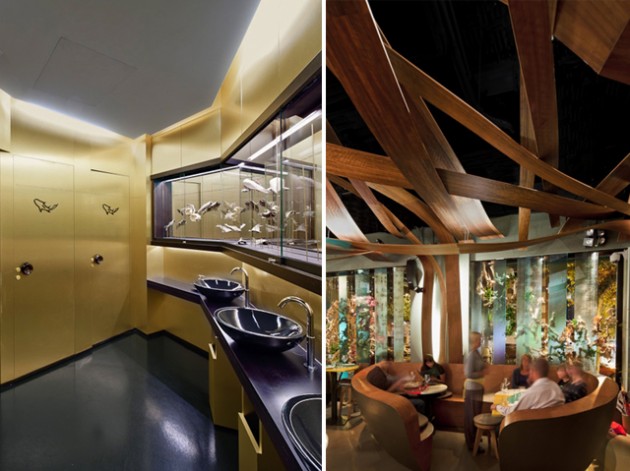
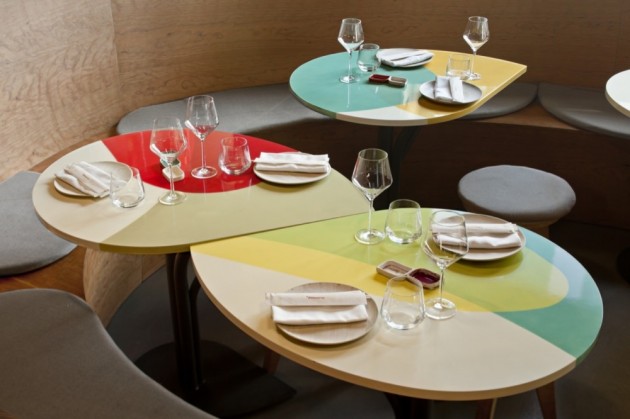


0 comments:
Post a Comment